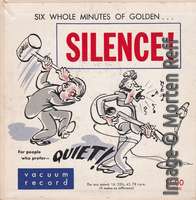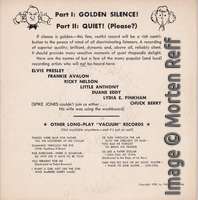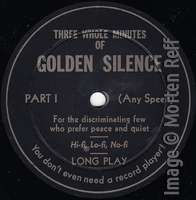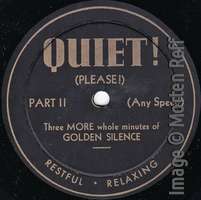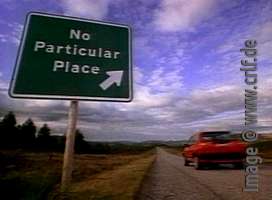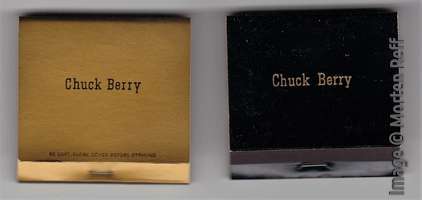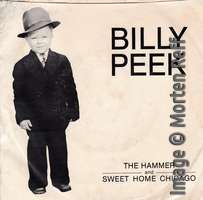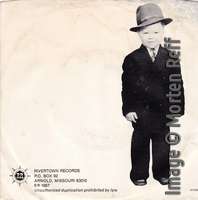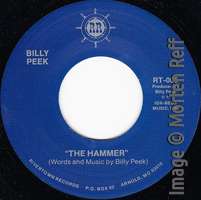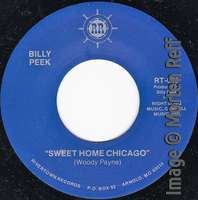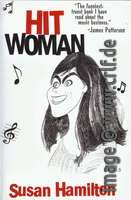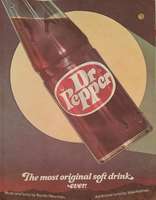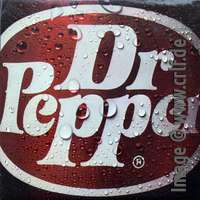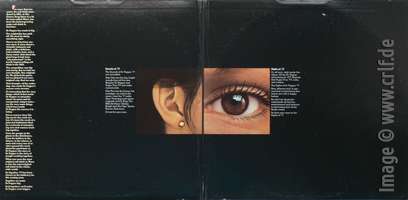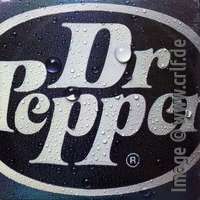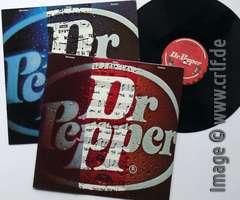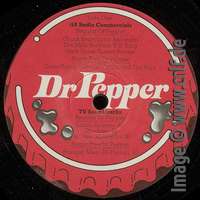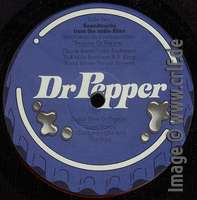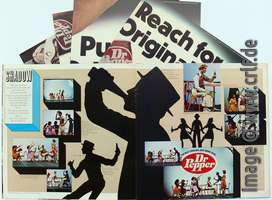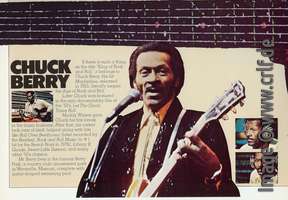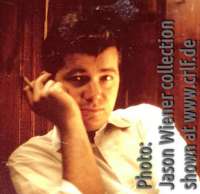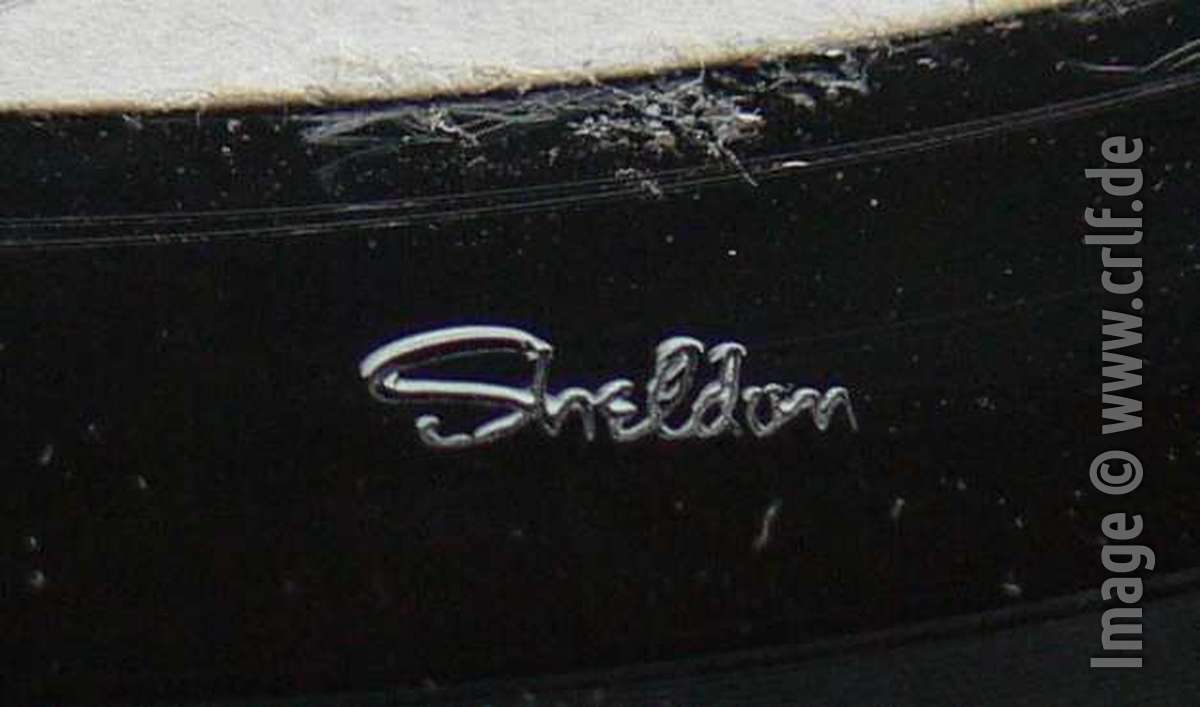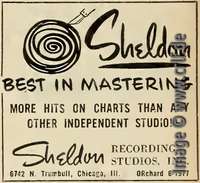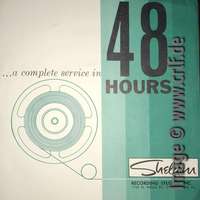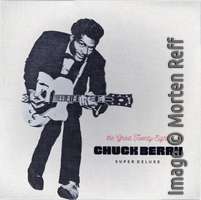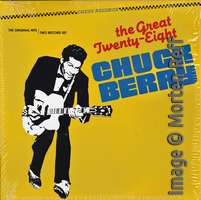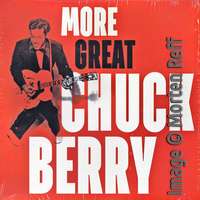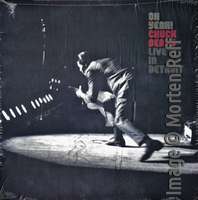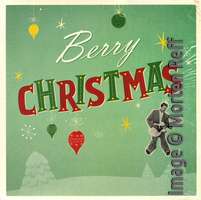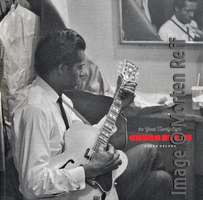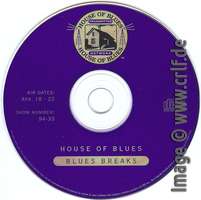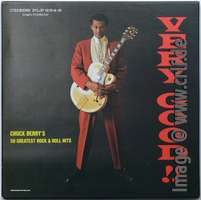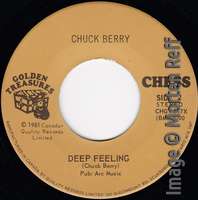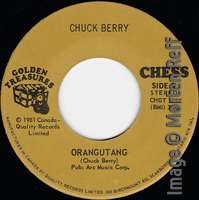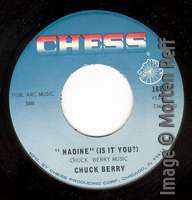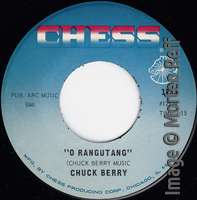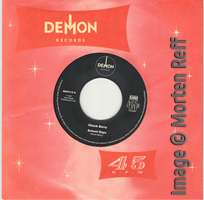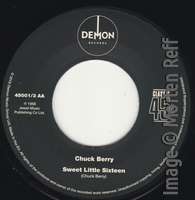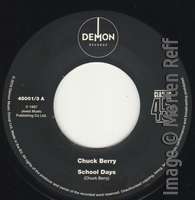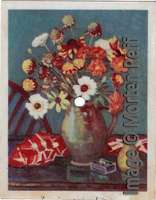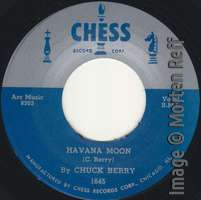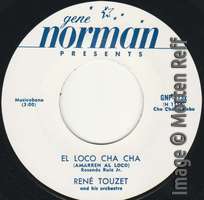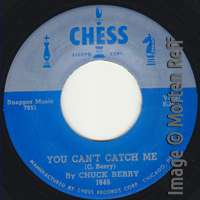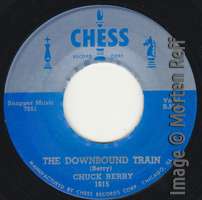Tuesday, August 28. 2018
CBID - a Chuck Berry record you cannot hear him on
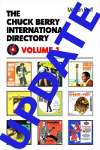
CBID is never complete as new records and CDs appear and some old rarities are discovered. This section presents interesting additions and corrections to CBID.
Today: as single proudly claiming that you cannot hear Chuck Berry on it.
USA (?)
SIX WHOLE MINUTES OF GOLDEN SILENCE!
Vacuum Records • 1959
Part I: Golden Silence / Part II: Quiet! (Please?)
Not featuring the following artists: Elvis Presley, Frankie Avalon, Ricky Nelson, Little Anthony, Duane Eddy, Lydia E. Pinkham, Chuck Berry. Spike Jones couldnât join us eitherâŠ
As itâs printed on the label: (Any Speed) You donât even need a record player.
Now this is a very special record indeed. Thereâs no music at all, just as it says, 3 minutes of silence on each side. And you can actually play it as it has grooves. BUT thereâs no sound.
Who came up with this crazy idea is anybodyâs guess. The cover is as thick as an EP cover. And you can enjoy(?) reading whatâs not on the record, especially on the back (see picture).
I have tried to check it out on the net but thereâs nothing to find, and if you search for Vacuum Record youâll end up with a vinyl record cleaner system.
The EP cover looks like it was made in 1959 but the record itself looks newer, soâŠ
And whoâs Lydia E. Pinkham? Well, Lydia Estes Pinkham (1819-1883) was the concocter of a herbal alcoholic âwomenâs tonicâ meant to relieve menstrual and menopausal pains. One could refer to the Scaffold and their âLilly The Pinkâ in 1968 but that was long after the record mentioned was out(?) However, the song above was based on an old US American folk song titled âThe Ballad Of Lydia Pinkhamâ known to exist around 1914.
Thursday, July 5. 2018
Chuck Berry's Recording Session for Volkswagen
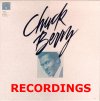
Remembering this line from Chuck Berryâs 1964 hit âNo particular place to goâ, copywriter Steve Landsberg and art director Gary Goldsmith of Doyle Dane Bernbach, Inc. (DDB) had the idea for an automobile advertising TV spot. So for the 1985 Volkswagen campaign they modified the text a little bit and produced the TV spot for VWâs GTI car showing the GTI riding the country with no particular place to go.
When I researched Chuck Berryâs contribution to the 1977 Dr Pepper advertising campaign (see the previous blog post), I ran into a March 2017 article by Steve Landsberg posted in the AgencySpy blog on the Adweek Network website: âThe Day I Spent Making an Ad With the Late, Great Chuck Berryâ (https://www.adweek.com/agencyspy/the-day-i-spent-making-an-ad-with-the-late-great-chuck-berry/128720)
Here we learn that Steve not only reused Berryâs 1964 recording but instead had him record a completely new version of his classic tune. I didnât know this. And my friends here didnât either.
So I started researching more about this rare recording. Steve and especially that time's DDB account representative Charlie Zollo have been very helpful with Steve telling even more than his story and Charlie providing a great collection of old documents from his files. Many thanks to both!
Steve even sent me a copy of the 1985 TV spot. Concurrently Anne Chanu found a poor copy of the spot on YouTube. Therefore all of you can go back in time and hear Berry perform this otherwise unreleased studio recording: https://www.youtube.com/watch?v=SjSJHV2RfQU
Given Charlieâs and Steveâs additional information, Steveâs original article for Adweek needs some corrections and additions. Both Steve and Adweek allowed me to provide you here with an updated version of Steveâs story.
But let's first remember Charlie Zollo how difficult it was to have Chuck Berry sign the contract:
While we can't say how much, I was prepared with a "suitcase full of cash" as we fondly remember (actually a large Cashiers Check) as an upfront incentive to sign the contract. I was dispatched by Carol, the DDB talent administrator (sorry Carol, but I forgot your last name), to Berry Park in Wentzville to negotiate the final contract after Chuck had fired his agent.This is Steve's story about the recording session in Berry Park, with some embedded comments:
I brought along these incentives knowing that Chuck liked to get paid upfront. And finally that incentive sealed the deal as he was opposed to some contract language that was non-negotiable and refused to sign.
I actually got up and was walking out when he called me back saying "OK, I'll sign, but you don't expect me to sign without getting paid first, do you?" I whipped out this very large Cashiers check and that was it, he signed.
He then gave me a tour of his Memorabilia Room ... hanging costumes, guitars, photos.
It was January 1985. [Editorâs note: According to Charlie's documents, the recording session told here happened in September 1984.] I [Steve Landsberg] was a copywriter at DDB. My art director Gary Goldsmith and I got thrown into a creative gangbang for the VW GTI. The brief was simple: position the GTI as fun to drive.What a great story â and how nicely told. Thanks for sharing, Steve!
Hey, letâs take Chuck Berryâs song âNo Particular Place to Goâ and show a GTI driving all over the place! We changed the opening lyrics to âDriving around in my GTI, my baby sittinâ by my side.â The client loved it.
Go go go Johnny go.
Around this time, I saw a rock and roll documentary on TV featuring Chuck Berry. He was going through hard, lean times, playing small clubs with local house bands. He was a solitary and bitter guy, resentful of the music executives who ripped him off and of not making the big money like the many bands so heavily influenced by his music.
Meanwhile I was thinkinâ,
⊠maybe we could get Chuck Berry to re-record his own song. He could use the money. And why go the typical route and pay studio musicians to imitate Chuck Berry if we can pay the real Chuck Berry?
Ainât got nothing to lose.
At DDB, some folks thought heâd never do it. But persistence exceeded resistance. Calls were made. Negotiations were made and remade. A deal was struck. It would be Chuck Berryâs first commercial. [Editorâs note: Not quite. There was the 1970s Dr Pepper song as well as a couple of text-only commercials.]
It goes to show you never can tell.
The deal was $15,000 cash. We had to record in Chuck Berryâs personal studio on his compound in Wentzville, Mo. There would be no autographs and absolutely no cameras.
Along with me and Gary, the team from DDB included TV producer Regina Ebel; music director Mike Doran; account supervisor Charlie Zollo; music producer John Hill; his engineer Glen Kolotkin.
We flew way out to St. Louis, drove 30 minutes south, and arrived at a driveway marked by large granite headstone engraved with the words Berry Park. The long, winding driveway led us to a modest ranch house that looked a little worse for wear. Dogs barked as we grabbed our cameras and Charlie reminded us, in no uncertain terms: âNO CAMERAS.â Then Chuck Berry came out to greet us.
I got the wiggles in my knees.
After our awestruck hellos, Chuck directed us past two small in-ground swimming pools, half filled with dark water and dead leaves, to a large building across from his house that was used as a local night club. This, too, had seen better days. Inside was a low stage surrounded by tables and chairs, a bar, and a jukebox. The group followed Chuck into his side studio, but I hung back because I just had to see the songs on Chuck Berryâs jukebox.
Seven hundred little records, all rock, rhythm and jazz.
Chuckâs daughter Ingrid and her boyfriend arrived (he played rhythm guitar). [Editorâs note: Steve is talking here about Ingridâs husband Henry âChuckâ Clay who played guitar, bass and drums behind Berry on many occasions.] The piano player showed soon after, but the drummer was a no show, so, Ingridâs guitar-playing boyfriend took his place. Then we discovered the studioâs 24-track system had about four working tracks.
Chuck and his band reviewed the 30-second musical arrangement and started warming up. After a little rehearsing, Chuck walked straight over to me and said, âI need a little chord to get the song going. Is that cool?â I still canât believe the King of Rock ân Roll asked me for permission to adjust his own song. âYeah sure Chuck,â I stuttered. A few more takes followed, but then some equipment broke downâand while it was getting fixed, Chuck started jamming. No Particular Place To Go flowed into Nadine then Roll Over Beethoven and more. Chuck even did his signature duck walk.
Itâs such a sight to see somebody steal the show.
Then the equipment was fixed and our private show ended. âOK, boys, letâs play for money,â Chuck said, and they played a few more takes. Berry wasnât happy with the drummer, so during a break he casually drifted over to the set and started tinkering. âHey, lay one of these down,â he called to the guys in the booth, and played what would become the drum track. Then he did the same thing on piano, and after a few hours of sheer jaw-dropping joy, we had what we needed.
Well, I looked at my watch and it was time to go. The bandleader said, âWe ainât playing no more.â
It would have been the end of a perfectly wonderful and crazy dayâŠbut it got even better. Chuck asked, âWould you all like to come inside for a drink?â Yeah, we all said, squeezing around Chuckâs kitchen table while his two female assistants prepared his dinner of spaghetti with tomato sauce and a side of peas.
âI donât drink anymore, but they keep giving me these,â he said while holding a cardboard box filled with an assortment of airline liquor bottles. I took a vodka (maybe two). He also gave us gold-colored souvenir matchbooks with âChuck Berryâ written in black type. We drank and watched him eat. âChuck, eat your peas,â scolded one of his assistants. He finished and asked, âWould you like a tour of the house?â as we all thought, âAre you fucking kidding me?â and responded with a polite chorus of yes and thank you.
We then followed Chuck to his study where almost every square inch of wall space was covered by framed gold records, awards, photos, and letters from Presidents, music royalty, and other VIPs. Back to the kitchen through the living room, we couldnât help but notice the round king-sized mattress on the floor, with two projection-TV screens playing. One satellite channel was tuned to Johnny Carson, the other was hard-core porn. Chuck said something I didnât quite catch, and I thought about his assistantsâ job descriptions.
Too much monkey business for me to be involved in.
Last time I saw Chuck Berry he was waving me goodbye. âIâll see you in London, Iâll see you in France,â he said, playfully pointing at each of us as we shook hands, hugged, and thanked him for everything. We got back into the cars where our lonely, empty cameras had spent the day.
Stendhal Syndrome, also known as hyperkulturemia, is a psychosomatic illness triggered when individuals feel totally overwhelmed in the presence of concentrated works of art or what they perceive to be immense beauty. The effects are short-lived and do not require medical attention.
Or maybe we just had the rockinâ pneumonia.
We drove back to our hotel in silence, exhausted from sensory overload with smiles on our faces. We didnât even turn on the radio. We were still listening to Chuck Berry.
An additional comment from Charlie Zollo:
âFor all of us who were involved, it was one of those once in a lifetime experiences weâll never forget. While we all had our own personal experiences, my favorite (which I tell often) was sitting outside of the control room, on the floor against a wall in the room where Chuck and his band were rehearsing. So there I was 10 feet away, as they jammed during the equipment down time, listening to them jam Roll Over Beethoven and other riffs. Listening to Berry during the breaks was, for me, more exciting than seeing any live concert by any rock group.âDefinitely it was, Charlie!
Charlie sent me the copy of an 1985 article by Aliza Laufer from Backstage magazine in which John Hill adds some details:
Hill was the music producer on the entire Volkswagen 1984/85 campaign, having written and produced all and arranged about half of the 20-spot package. According to Hill, the 1984/85 Volkswagen campaign is the biggest introductory budget in VWâs 30-year history.The last sentence means that in contrast to other commercials where the sound follows the pictures, here Steve, Charlie and their team had to film and cut outdoor segments so that they fit to Berryâs singing. Remembering the filming Steve told me:
Although each VW spot in the new campaign carries the tag âItâs not a Car, Itâs a Volkswagenâ, for the 1985 model year a lot of liberties were used, according to Hill. âThese arenât ordinary car commercials,â he maintains. âOther car spots follow an automotive style â almost a clichĂ©. DDBâs effort is to be innovative; a couple of steps fresher than everything else.â
Hill explains that for the 1984 campaign the melody remains unaltered from beginning to end, while for 1985 he was freer to fit the music to the visuals. He approached it as if it was a jingle with words removed.
Even though Hill had the occasion to work with many pop and rock artists during his years at Columbia, he still confesses to getting a thrill out of working with Chuck Berry. âChuck was a childhood idol of mine,â Hill recalls, âHeâs an extremely professional musician; every approach on his guitar is unique.â
In the âNo Particular Place To Goâ spot, VWâs GTI is seen doing just that â driving along with no particular place to go. The song is played in the background.
âNew lyrics were written for the commercial, so we had to start from scratch.â Hill noted. âWe used modern hi-tech equipment for the recording, which was ironic because we were striving for a 1957 sound.â For the Chuck Berry spot the commercial was cut to the music.
The commercial was shot in Scotland because Los Angeles was going through a drought and looked too dry. Nothing was green. The area of Scotland we used looked very much like Americaâs lush  heartland.Other than the music, you only hear a voice-over at the end of the spot. Steve remembers:
The announcer was the late Roy Scheider [Editorâs note: known from Jaws and other popular movies], who was the official voice of VW back then. I covered the recording myself in LA. He was a very kind man. He smoked and drank coffee to get that deep voice of this ready.According to Charlieâs old files, the VW GTI spot premiered on March 1st, 1985 on MTV.
In addition to the TV spot, Charlie remembers that the same track was also used for a Volkswagen radio spot.
Since Berry's deal was for TV only, we paid him another large amount to use the recording for radio as well. Part of the payment was a new GTI, that he picked up at a local Missouri dealer. My secretary (in the days when we had secretaries) would call out "Charlie, Chuck Berry is on the phone" as we were arranging the personal appearance of Chuck picking up his GTI. There was press coverage as I recall, but none that I have a copy of. All in all, use royalties included, he did very well for a few hours recording time. I think we paid him for his studio also.Does one of our readers have a copy of the radio spot or of the press article showing Berry getting his Volkswagen?
The gold-colored souvenir matchbook Steve Landsberg got from Chuck Berry is also known to exist in black with golden print. Hereâs a photo from Morten Reffâs collection:
Thanks to Steve, Charlie, and Morten for their help with this article bringing to our attention a Chuck Berry studio recording never released on record or CD.
Wednesday, July 4. 2018
CBID - Addition to the Billy Peek discography

CBID is never complete as new records and CDs appear and some old rarities are discovered. This section presents interesting additions and corrections to CBID.
Today: Page 1861 in Volume 4 has a brief discography for Billy Peek, a guitarist who played with Berry and recorded several Berry covers and soundalikes. Here's an addition to the Billy Peek discography:
Single
The Hammer / Sweet Home Chicago
Rivertown RT-005 • USA, 1987
On page 1861 thereâs a Billy Peek discography which says that this single came out in 1992. Well, it didnât. The album âThe Answerâ that the two songs are featured on was released in 1992. However, thereâs no year of release printed on the single in question, so I figured that it also came out in â92. But now when this PS turned up itâs printed 1987 on the back. So the actual album that came out in â92 featured various songs probably recorded between 1987-1992. It seems like «The Hammer» was the actual plug-side. I had it the other way around in the book. As you can see on the attached labels nothing is mentioned about any A or B-side.
Saturday, June 9. 2018
Chuck Berry's Recording Session for Dr Pepper

Quite recently, a video was uploaded to YouTube showing the recording of the song and the corresponding interview: https://www.youtube.com/watch?v=JgJfpexPfEc. Thanks to Anne Chanu for finding it!
The video is interesting, but even more interesting is a note in the video description which points to a book written by Susan Hamilton who was the producer of the Dr Pepper spots and also of this Chuck Berry song. I bought and read the book, which is called âHit Womanâ. So should you. Itâs an interesting and funny read about a segment of the music industry you usually donât hear much about.
Susan Hamilton was the owner of HEA Production in New York, one of the top advertising music production companies (also known as a âjingle houseâ) in the US. You can read a short bio at susanhamilton.com, but you better read the full book.
Video and book made me write this blog post about one of the rarest Chuck Berry records ever.
It all started when the Dr Pepper company and their advertising agency Young & Rubicam came up with a new campaign called âThe Most Original Soft Drinkâ. Itâs not quite clear when, but it must have been in late 1973, early 1974 when HEA Productions was contracted to create the music for this campaign. Through HEA founder Herman Edel and NY attorney Lee Eastman, HEA hired Eastmanâs son-in-law to write the song: Paul McCartney.
Susan Hamilton recalls meeting Paul and Linda McCartney in Los Angeles to discuss the project with the client and agency. To everyoneâs surprise McCartney was not interested at all in learning about the planned campaign. Instead he told them that he had already written the song needed and played a cassette with a demo recording.
This song was simply done; it was classic McCartney; it had a great hook, but it had absolutely nothing to do with our campaign. There was no relevance to all of the spots that have been tailored for the campaign â the precious campaign that had been worked on for months and (more importantly) sold to the client.McCartney refused to come up with something else and so Susan Hamilton was left finding a different composer within very short time. Through Tim Newman who worked for Young & Rubicam she got into contact with his cousin who agreed to write the jingle. The new composer was famous singer-songwriter Randy Newman who came up with the melody and lyrics for âThe Most Original Soft Drink Everâ.
Fellow singer-songwriter Jake Holmes rewrote the verse lyrics and the song was used for the 1975 Dr Pepper campaign and the following ones until 1977. (Sheet music for this song as below is currently available as ebay item 253525494577.)
For the radio spots, Susan Hamilton recorded the same song in various musical styles using a number of well-known artists. All these recordings were made over a few months in the fall of 1974.
A first set of recordings was used for the initial 1975 campaign. These were from bluegrass star Doc Watson, blues legend Muddy Waters, jazz pianist Eubie Blake, singer Anita OâDay and banjo player Grandpa Jones. A (December?) 1974 promotional album (Dr Pepper DP-1274) contains these recordings and other spots for the campaign. Susan recalls:
The Muddy Waters session for Dr Pepper was recorded in Chicago at Chess Records Studio, and it was a nightmare. The studio was in disrepair. When mixing the spots, we found the harmonica and the electric bass on the same track. Worse yet, Muddy and the band hadnât a clue how to handle Randy Newmanâs charming, chromatic shuffle tune. I had to somehow wrangle it into a 12/8 blues song. It took a while âŠFurther recordings seem to have stayed in the can and were used for a later campaign in 1977. Artists selected then were Teresa Brewer, Hank Snow, B. B. King, the Mills Brothers, Lynn Anderson, and Chuck Berry. Again each performed the Newman/Holmes tune according to their specific style.
Bernie [Drayton] had to sit next to Muddy on a piano bench and whisper-feed him the words just before he spoke/sang the lyrics. The choruses were fine, but the word âoriginalityâ in the verse was mangled almost beyond recognition. Eliot [Scheiner] and I ended up piecing it together, syllable by syllable.
According to Susan Hamilton, she recorded Chuck Berry probably in October 1974, just before they flew to Chicago to record Muddy Waters.
The standard procedure was to record the base track in HEAâs own studio in Manhattan using a fixed set of very capable (and musically flexible) studio musicians. Susan Hamilton and her team then went to the featured artist and recorded solos and voice over the prerecorded track. Unusual for radio spots, but a film crew joined them in every studio to create a video of the recording and an interview with the artist. This is why we can see today how Berry performed the tune. The film was used only for promoting the artists and the campaign to Dr Pepper partners such as dealers or bottlers.
These partners were also the only recipients for the corresponding Dr Pepper promotional record given out at the kick-off convention. Very few of these promotional records seem to have survived. Even discogs.com misses it. Thus before we continue to learn about the crazy creation of this recording, letâs have a more detailed look at the beautiful record which this site's Morten Reff discovered in June 2012.
âThe Sights and Sounds of Dr Pepper â77â (DP-76 in dead wax) comes in a gatefold cover:
Besides a 12â LP there are two booklets, a red one for the Regular Dr Pepper campaign, a blue one for the Sugar Free Dr Pepper campaign.
Likewise the LP has a red and a blue label. The contents can be seen in the two scans. Basically the red side contains the 60-second radio spots and the soundtracks of the TV spots, while the blue side has the soundtracks for the little films containing the interviews and session footage. The Chuck Berry radio spot is at the beginning of the red side, the interview (followed by a count-in and the same song recording) is at the beginning of the blue side.
The 16-page red booklet and the 12-page blue booklet each contain descriptions and photos of the TV spots, photos and some detail about the artists contracted for the radio spots plus separate reproductions of the outdoor advertisements.
This is the segment about Chuck Berry which also includes photos taken from the film as shot during the recording session. All looks so perfect and in harmony.
And this is in total contrast to what Susan Hamilton writes about this recording. Chapter 28 is only seven pages long, but itâs well worth buying the book just for this story.
It all started when Hamilton, engineer Scheiner and HEA salesman Drayton flew to St. Louis with the agencyâs Dennis Powers as well as cameraman Jim Desmond and his sound guy. The flight was late so they arrived close to midnight and tired. At the airport they were refused to get their rental cars until Chuck had a talk with the agent. Next they couldnât sleep in a comfortable hotel in St. Louis but had to follow Berry for an hour by car to get to Berry Mansion, Summer Camp for Inner City Children â a dark, unlit wasteland of broken glass and cracked asphalt with no coffee, no showers, no food.
In the morning they drove back to a broken-down studio of Berryâs in downtown St. Louis (not the Berry Park studios, seemingly), only to learn that Berry requested another $5000 for the recording. Susan Hamilton managed to get the approval from the agency and was forced to write a, in her mind non-binding anyway, contract on the back of empty envelopes. Finally they recorded the overdubs onto the track they brought with them.
We got a bunch of takes and in a very short time. I knew I had plenty of material to be able to compile a great performance. Of course it was a little difficult to judge because we didnât get to hear some of our previously recorded instruments. They just wouldnât play from the 24 track machine through the broken faders. Oh well. We just imagined them.When the team was packing up in the afternoon, Berry demanded his money. He wanted the extra $5000, now and in cash. âYouâre not leaving here until I get it. The tape is not leaving here, and your people ainât leaving here, neither,â Berry said and locked people and tape in a back room. It was late on a Friday in St. Louis and Susan Hamilton had no chance to contact the New York agency nor the client.
I picked up the phone and dialed my office. God was merciful, and someone was there. I had them wire the money out of our account to the Western Union facility in downtown St. Louis. I told them it was ransom money. I was serious.Eventually the money arrived, Susan got tape and people out of the back room after counting it out into Chuckâs hands. To top it, Berry forced them to go out with him for some soul food in one of the scariest parts of the town.
The whole two-day Chuck experience was both hilarious and terrifying, as you can imagine â felt like I was in some dark comedy of a movie!Given this story, itâs no wonder we should be very suspicious watching the session footage on YouTube. The film shows Berry accompanied by session musicians on drums, bass, piano and sax. Look carefully and you will not find a single image where you see Berry together with one of the musicians. You canât, because Susan Hamilton recorded Berry in St. Louis alone without a band. The prerecorded track had been made in New York already.
I asked Susan if she can identify the session men from the video. She says that any shots in the film of musicians other than Chuck were added for creative interest by the film crew. These were not the original session men. Itâs fairly easy to see at the end where the film shows a sax player. There is no sax on the whole recording.
Asked whether she remembers the original musicians, Susan tells that she can only guess. So despite the nice Dr Pepper video we are left with the unknownâs in our database.
All quotes from Susan Hamilton have been taken from her excellent book âHit Womanâ (Hitwoman Publishing, 2013) and from emails in which Susan was so kind to answer my additional questions. Many thanks!
Friday, May 4. 2018
Jack Wiener and the Sheldon Recording Studios
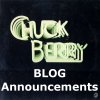
This is when I started researching about Wiener who was one of the most interesting record men in the late 1950s and early 1960s. Very little is known about Wiener's work. Therefore I started to write a short article about him. As I researched more, the article became longer and longer. Finally the text is now online as part of this site.
Most of his life Jack Wiener operated using the brand Sheldon Recording Studios named after his middle name. So when you were uninterested in Wiener so far, record collectors should now start to pay attention. Sheldon is a famous name not only to Chuck Berry collectors.
Looking at your Chuck Berry 45s you will see a tiny Sheldon stamp in the dead wax area around the label.
This Sheldon stamp signifies that this record has been mastered by Jack Sheldon Wiener. You will find this on a huge number of singles, EPs and albums from dozens of independent record companies such as Chess, Atlantic, or Vee-Jay.
Looking at your Chuck Berry LPs you will see the logo "Sheldon Recording Studios" on the back of One Dozen Berrys as well as on other Chess/Checker/Argo albums.
Now you're paying attention, don't you?
Jack Wiener (1935-1999) was a sound engineer by profession. From what he did, he was also an inventor, a designer, an architect, a producer, and a studio owner.
In his teens, Wiener built and sold high-fidelity cabinet speakers. At the age of 17 he entered the recording business and started to work at Universal Recording, Chicago and later at Master Recorders, Los Angeles. As an account executive he handled independent record companies such as DOT, CHESS or SUN for which he mastered, doctored, overdubbed and recorded artists such as Pat Boone, Chuck Berry, or Elvis Presley.
In 1956 Wiener started to build a first recording studio on his own located at 2120 South Michigan Avenue, Chicago. Yes, the famous Chess studios weren't Chess studios at all. The Chess brothers had bought the building and provided some money for the studio, but Jack Wiener was a co-owner and did all of the planning and management. He built the recording console, he planned the room layout and construction, and he selected and bought the studio gear. The famous sound we all know from 2120 was purely Jack Wiener's achievement.
Wiener also did all of the recording and mastering at 2120 S. Michigan Av. up to mid 1958. At his so-called Sheldon Recording Studios, Wiener recorded all the Chess/Checker/Argo artists, but also performers from other labels such as the Coasters, Johnny Cash, Ronnie Haig, the Mark IV and more. Not to be forgotten, he cut and mastered Chuck Berry's Sweet Little Sixteen and Johnny B. Goode.
In July 1958 Jack Wiener was drafted and left 2120. He became a member of the Audio-Visual Branch of the Information Service at the Fifth Army Headquarters in Chicago. Concurrently to his work for Army radio broadcasts, he continued to record, to master, and to design recording studios. For instance he recorded the complete 1959 Playboy Jazz Festival. His masters for Chess, Sun, Nashboro and so on were now marked with the tiny Sheldon stamp in their dead wax area. As a consultant Wiener designed the recording console for Sam Phillips' new SUN studio in Memphis as well as the Echo Recording Studios for Jack Clement.
A 1961 client list included more than 200 companies Sheldon was working for, mostly record labels from Ace to Vee-Jay but also radio and TV stations as well as advertising agencies. With the huge list of clients, it's no wonder in a July 1959 ad in Cash Box, Wiener proudly claimed "Best in Mastering: More hits on charts than any other independent studio".
In 1962 Jack Wiener built a new Sheldon Recording Studios at 1725 North Wells Street, Chicago. This time he included everything needed for providing full service to independent record labels. This included recording and mastering, but also pressing, label printing, packaging and shipping. "48 Hours from recording to sale."
By the end of the 1960s with the decline of the independent recording labels, Wiener moved his business to TV sound recording and processing. In the 1970s and 1980s he built and sold top-of-the-line equipment used for motion picture and television production. He also developed computer hardware and software for broadcasters and recording engineers.
Jack Sheldon Wiener was one of the unnamed experts behind all the great records you love. Singer and guitarist Ronnie Haig called him "The Genius in the Sound Room". Wiener's contribution to 1950s music should not be forgotten. Therefore the whole story is here on the main site.
Acknowledgements: I wish to thank all the fellow writers and experts who helped during my research such as Jason Wiener, Nadine Cohodas, Susan Schmidt-Horning, Ronnie Haig, Fred Rothwell, Bruce Pegg, Colin Escott, Peter Guralnick, Bill Leebens, Hermann Ruwwe, Bill Daniels, Opal Louis Nations, Tim Samuelson, Kandalyn Hahn, Morten Reff, Thierry Chanu, and Steve Carr. Thank You!
Wednesday, April 25. 2018
Two new CDs containing old live recordings

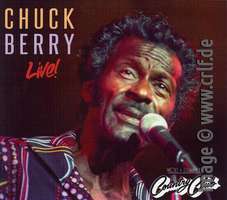
The CD is called Live! Wolf & Rissmiller's Country Club - 1981 and seems to be available only on ebay. This time the ROUGH CD got a catalog number (40147), though interestingly the same product code as the previous one which contained live recordings from Seattle and Waterloo.
Of course the ROUGH people did not find the original Norman Pattiz recordings. They just combined what was found on Youtube and on previously released CDs and LPs. So here we find the twelve tracks from the first set as they were broadcast on radio plus the one track from the second set which made it to the Westwood One Radio album.
To fill the CD, ROUGH added some live recordings from other shows. Here we get three songs from the 1982 show at the Roxy which are well known from many other releases. Plus we get three songs from a French TV show 1965. These tracks have been available on video before, e.g. on Youtube or at L'Institut national de l'audiovisuel (Ina.fr). The show was recorded for the French TV series Music-Hall de France on November 4th, 1965 in Montrouge near Paris. As this is the first audio release of this recording, we have added it as a session to our database.
Concurrently to ROUGH 40147 they also released a second CD again containing known but rare Berry live recordings in high quality. ROUGH 40148 is called Saturday Rock - Live at the BBC '72.
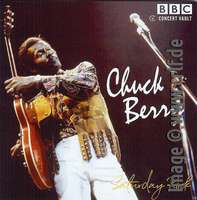
As you can read from the title, again we know these recordings well. The Sounds for Saturday show has been released on multiple albums before, most notably the Six Two Five vinyl bootleg.
In contrast to the previous releases, the ROUGH CD contains the full show recording as it had been made available on a DVD last year. Also from a DVD are the two bonus track recorded for the Radio Bremen TV show five days before the BBC concert.
Again this CD is offered on ebay only so far.
Thursday, April 5. 2018
Jimmy Marsala's biased memories of Chuck
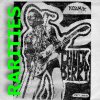
Now Marsala has written a book called "Memories of Chuck" in which he reports his experiences on the road.
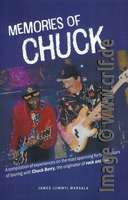
Marsala's recollections could probably have made this a highly interesting book. Unfortunately they didn't. Given the reports from promoters and journalists about Berry's habits regarding payments or female fans, one would expect nice stories from a first-hand witness. Unfortunately the result is tame and boring.
Marsala tries to correct the public image of Berry by defending him in every way. For every incident reported, Marsala finds a probable and nice explanation, whether on leaving a promoter with paid rooms to get a different hotel, or sending the band off-stage, or overrunning fans with a rental car. All of Marsala's stories are so biased you are tempted to stop reading after one third of the book. Only in the very end you'll find a chapter on Berry's "thriftiness". Everyone else would probably call it "closefistedness". Seems as if Marsala in the end did not really liked to sleep on the floor only because Berry decided to book just a single and single-bed hotel room for the two.
Besides two chapters containing short anecdotes of Marsala's life with Berry, the book chronologically describes incidents on various shows and tours between 1979 and 2014. There are five pages about Berry/Marsala's performance at Bill Clinton's inauguration party, five pages about a show in Spain, five pages about a tour in Brazil, and so on. Everything is very brief. Of the 180 pages of the book, only about 100 contain text at all.
Most of the remaining pages contain color(!) photos from Marsala's collection. Most show Marsala and Berry on stages all over the world, or they show Marsala and the band waiting for transportation. Other photos show Berry or Marsala with other famous artist such as Ray Charles, Aretha Franklin or Bill Wyman. Unfortunately many of the photos are not of best quality.
As Marsala writes from a first-hand witness position, we are supposed to believe what we read. You should take into account that Marsala writes from memory, though. And memory may not always be trusted. I cannot judge on most of the anecdotes reported, but I have been on-site at the 1983 Eindhoven concert. This is where the Berry photo from this site's logo originated. In 1983 I wrote about this concert and what I wrote does not necessarily match Marsala's memories.
I wish Marsala would have taken the time to write more, to write more professionally and to write more openly. Then this could have been a very good book. As it is, you will still want to buy a copy, but like me you will be disappointed.
Since none of the larger publishers seems to have been interested in selling this book, Marsala published it on his own using a Canadian company called FriesenPress. This is not a publisher but a company who offers self-publishing. Marsala provided the complete book, probably along with the non-professional layout. FriesenPress stores the book's electronic file and prints a copy as soon as a buyer wants one. They work together with sellers such as amazon and even with local book-on-demand companies for fats supply. When I ordered my copy from amazon Germany, the paperback I got was printed on demand by a German company. Yours may come from some place completely different. Some sellers are listed here.
Saturday, March 17. 2018
Chuck Berry's Chess Albums - How they could have been

Thus Arian imagined how Berry's early albums would have looked like if Chess did release all recordings in time.
On his blog "Albums Back from the Dead - Recreating albums that never actually existed" Arian shows us Berry's Chess albums he imagined, including track listings which follow the recording dates and imaginary covers.
Look, read and enjoy
Chuck Berry 1955-59: https://albumsbackfromthedead.blogspot.com/2018/02/chuck-berry-discography-1956-59.html
Chuck Berry 1960-66: https://albumsbackfromthedead.blogspot.com/2018/03/chuck-berry-discography-1960-66.html
Wednesday, March 14. 2018
CBID - Twenty-eight and some

CBID is never complete as new records and CDs appear and some old rarities are discovered. This section presents interesting additions and corrections to CBID.
Today: The re-issue of the Great 28 album comes in a box with three bonus records.
USA
THE GREAT TWENTY-EIGHT â SUPER DELUXE [4-LP]
Chess Geffen (Universal) B0027213-01 • USA, 2017
THE GREAT TWENTY EIGHT (2-LP)
Chess Geffen B0026758-01
Reissue of the original 1982 album set Chess CH-8201 (see page 86).
MORE GREAT CHUCK BERRY
Chess Geffen B0027213-01 LP01
Wee Wee Hours / No Money Down / Drifting Heart / La Juanda (Espanol) / Blue Feeling (instr) / Vacation Time+ / Joe Joe Gunne / Too Pooped To Pop+ / Our Little rendezvous / You Never Can Tell / Promised Land / Little Marie / Dear Dad / My Ding-A-Ling (live, single edit)
OH YEAH! LIVE IN DETROIT
Chess Geffen LP-1427
Guitar Boogie* (instr) / Let It Rock / Almost Grown / Chuck Berry dialogue 1 / Too Much Monkey Business* / Johnny B. Goode / Introduction â instrumental / Sweet Little Sixteen / Wee Wee Hours / Chuck Berry dialogue 2 / Maybellene / Medley: Goodnite Sweetheart Goodnite +-Johnny B. Goode-Let It Rock-School Day
BERRY CHRISTMAS
Chess Geffen B0027213-01 EP01 (10â) (red vinyl)
Run Rudolph Run / Merry Christmas Baby+ / Spending Christmas / Christmas
Now this came as a surprise to most people. A 4-LP box set with Berry in 2017, however, the first time I saw it turn up on eBay was in February 2018. It contains the original double album from 1982, same fold-out cover and even the label is the same.
More Great Chuck Berry contains B-sides and more hits. Same label as above. The front cover has some resemblance to the original More Chuck Berry Chess LP-1465.
The Live In Detroit album is surely a collectors item, first time on vinyl. It contains the first and second set from Saturday 26 October at the Walled Lake Casino in Detroit, except the two tracks marked * which are from the first set on Friday 25. The thing is that this particular Guitar Boogie is the best version from the shows. The first time these songs came to light, except for Monkey Business that was included on the Bear Family box set, was on the US Universal box âYou Never Can Tellâ in 2009. So if you wanna get the songs in correct sequence you better stick to the Bear Family box set.
As you can see the LP number is following the âAfter School Sessionâ LP-1426. The label here is the old black one with vertical silver Chess logo. (1427 was actually a Muddy Waters album. It should have followed the âOn Stageâ album, however, this is also wrong as LP-1481 was really a Slappy White album. Chess LP-1466 was not issued so that could have been used, but the compilers probably didnât know.) Finally we also get the names of the musicians who played behind Berry, plus a story on the background for this special event.
The 10â Berry Christmas album comes in red vinyl with a green Chess label that makes it look like a 78rpm except for the colour that is. The credits for Run Rudolph Run reads C. Berry-M. Brodie.
Thereâs a 36 page booklet in LP size with liner notes by Alan Light, a lot of colour and black & white images, a US discography and recording details. Bear Family, Fred Rothwell and Morten Reff are credited. Thanks.
Addition by Arne Wolfswinkel: The box version sold by uDiscover is a limited edition of 500 copies where the four LPs are made of blue Vinyl.
Addition by Dietmar Rudolph: Since the booklet finally tells the name of the five musicians who backed Berry in Detroit, we have updated the database accordingly. The band consisted of:
Joe Hunter (piano)
Henry "Hank" Cosby (tenor saxophone)
Thomas "Beans" Bowles (baritone saxophone)
James Jamerson (bass)
William "Benny / Papa Zita" Benjamin (drums)
Monday, February 26. 2018
Where have we heard this interview before?

I recently received another of these radio albums containing five segments of 5 to 7 minutes each to be broadcast as House of Blues Breaks on CBS stations. The segment for Thursday, 21 April 1994 concentrates on Louis Jordan but holds an interview segment by Chuck Berry related to Jordan.
Berry says:
They say that's a Chuck Berry song because it goes 'da-da-bi-da-bi-da-bi-du-a-da-bi-du-a'. Well, the first time I heard that was one of Carl Hogan's riffs in Louis Jordan's band. We have T-Bone Walker - I love T-Bone Walker and his blues. So you put a little Carl Hogan, a little T-Bone Walker, and a little Charlie Christian, the guitarist in Tommy Dorsey's band, together. Look what a span of people that you will please. And that's what I did in Johnny B. Goode, in Roll Over Beethoven. And making it simple is an important fact, I think, that resulted in a lot of the artists understanding, being able to play my music. If you can call it my music. But there's nothing new under the sun.
This does sound very well-known. We have heard Berry tell this in multiple interviews before. However, I checked the remaining radio station albums and did not find this specific segment. Do you remember where we have heard this specific interview segment before? Let me know.
Friday, February 16. 2018
No Chuck Berry on CHESS 2CH-60015

Some people have noticed that various web sites list Chuck Berry recordings which are not in our database. All these contain "alternative facts" and it's in no way our job to correct those. One error, which even made it to Mike Callahan and David Edwards' excellent Both Sides Now website, continues to be repeated over and over, though. Time to get the facts right:
In June 1972 Chess recorded several of their main artists at the Montreux Jazz Festival. This included Bo Diddley, Chuck Berry, Willie Dixon, Muddy Waters, Koko Taylor and T-Bone Walker. Most were backed by The Four Aces, i.e. Lafayette Leake, Dave & Louis Myers, Fred Below. Some performances including Berry's were also broadcast on TV. From these broadcasts and from audience tapes we know it's been a poor Berry performance despite Walker and Dixon as guest artists on some tracks.
Chess decided to release the best recordings from the various shows on a two-LP set numbered 2CH-60015. Berry's complete performance seems to have been mastered for release, as both Michel Ruppli and Fred Rothwell report the master numbers CH2440 to CH2453 containing the songs from Berry's Montreux performance.
The double album was initially announced under the title "The Blues/Rock Cookbook - Volumes 1 & 2" to be released by Chess/Janus in September 1972. The track listing seems to have included Let It Rock (master CH2448) and School Day (master CH2453) from Berry's performance. [I haven't seen the original announcement yet, but I found a note in Cash Box which lists the artists, though not the songs.]
Those who know tell that the masters of these two songs have been cut from the master tape residing in the Chess vaults which otherwise still has the complete stereo recording. Thus it looks as if a master tape for the Blues/Rock Cookbook album had been created.
However, we have never seen a copy of this album nor any image thereof. It seems that it never made it to the stores. Strangely, many online discographies list 2CH-60015 under this title - and list Berry among the artists.
Correct is instead, that the final release of CHESS 2CH-60015 in February/March/April (?) 1973 has the title "Blues Avalanche" on the cover and "Blues/Rock Avalanche" on the label. The "Avalanche" album has the exact same tracks as the planned "Cookbook" album except for the two Berry tunes. There's no trace of Berry on the disk or on the cover.
It is completely unknown why this change happened? Fred Rothwell writes that Berry had a dislike for compilations. Another wild guess could be that Berry demanded additional cash for the publishing of his recordings. Or someone had noticed that Chess had just released a Chuck Berry live album (The Chuck Berry London Sessions, CH-60020). It even could be that Chess officials finally noticed that Berry's performance in Montreux was poor. Who knows?
In case you wonder, yes, there is another album missing Chuck Berry live performances. The soundtrack album for Richard Nader's movie "Let The Good Times Roll" (Bell 9002, 1973) has the best live performances by old-time rock'n'rollers such as Fats Domino, Bill Haley, and Little Richard, but misses the Berry part from the film including a performance together with Bo Diddley.
Saturday, January 13. 2018
Chuck Berry live 1965 and 1980

A couple of weeks ago a new CD called Hail! Hail! Chuck Berry! Live! became available containing two shows which are really worth listening to. Although the CD says "This CD-R is a non commercial product and is for private use only", it is professionally made with a printed cardboard envelope. The label is called ROUGH. There is no catalog number, but the barcode reads 640509040147, so we take this as the catalog number.
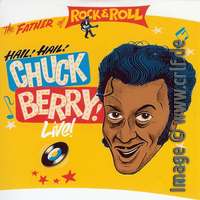
The two shows included are well known. Seven tracks come from a show recorded in February 1965 at the TV studios of Radio Télévision Belge in Waterloo, Belgium. This show was broadcast under the title "Face au public". It's available in very good quality on YouTube at https://www.youtube.com/watch?v=lhoyMlX5avU
It's interesting to note that Berry is backed by professional Jazz musicians from Belgium: Willy Donni on guitar, Willy Albimoor (Willy Noël De Moor) on piano, Ed Rogers (Roger Van Hoverbeke) on double bass, and Eddie Hunton on drums.
Besides his greatest hits, Berry also performs his latest singles and The Things That I Used To Do, a blues by Guitar Slim.
Further 14 tracks on this new CD come from a September 1980 show at the Seattle Arts Festival "Bumbershoot". Again this recording is of highest sound quality. It probably was recorded and broadcast by Seattle radio station KSIW. At least KSIW DJ Gary Crow introduces Berry and the band and promotes the radio station.
Fred, Thierry and myself spent some time trying to find out who backed Berry at this show. Crow introduces them as the "Northwest All Stars" and they are much better than the average pickup band Berry used to play with. The guitar player and the piano player both get time to solo which is a strong indication for Berry really liking their play.
With the help of Eric Predoehl and Ned Neltner we finally got into contact with guitarist Barry Curtis (ex-Kingsmen) and drummer George Rudiger (of Jr. Cadillac) from the band. Both Barry and George remember the show well. They report that the electric piano was played by Tom "Cadillac" Katica (Jr. Cadillac as well), who died in 2010. They didn't know the bass player who was traveling with Berry. This indicates that here again we hear Jim Marsala playing.
Eric has a great photo shot on his louielouie.net site showing Chuck, George, and Barry during the Bumbershoot show: http://www.louielouie.net/blog/?p=9074
Besides all his greatest hits, the show includes nice versions of You Don't Have To Go and Baby What You Want Me To Do written by Jimmy Reed as well as Lousiana Blues written by Muddy Waters. Note that in contrast to the known audience tapes, the show on this CD has been shortened. Due to time limitations, Johnny B. Goode was excluded, Reelin' And Rockin'/House Lights was shortened by two minutes. Also missing is the introduction by Gary Crow and an initial guitar instrumental based on Rockin' At The Philharmonic.
Right now we haven't seen this CD offered in stores or mailorder catalogs. It is offered on ebay, though.
Sunday, January 7. 2018
Yet another Carol

The single master is more difficult to get as it was used only for the hit single and the follow-up EP. According to Thierry Chanu, the single master has been used only once since then, on the British album More Chuck Berry (PYE NPL-28028). In the US this master seems to have been lost which is why Bear Family in 2014 reconstructed it from a Vinyl single to re-issue it on their 16-CD box set.
Also lost are session tapes showing the development of the recording as well as the overdubs tried. So it came out as a surprise when in April we found a variant of Carol having an additional piano overdub which is not on the original single or LP release. This piano overdub version has been published only once: on the 1973 double album Chuck Berry's Golden Decade, Vol. 2.
This made us listen to Carol in greater detail trying to find a second release of this piano overdub. We didn't.
But in December Thierry Chanu found something else: On the Japanese 1983 box set Very Good!! (CHESS PLP 834-6) there is a third variant of Carol!! Again it sounds almost the same as the hit version but has additional piano playing. And this is a different piano overdub than the one on Golden Decade.
The piano overdub on this version is much more audible, but concurrently it's also worse. It doesn't fit the song very well. And the master runs approximately 5% faster than the hit version, whether on purpose or not. According to Morten Reff, this second piano overdub was also used on a second Japanese box set called From The Beginning 1955-1960 (CHESS SJET 9523-5) released probably in 1973. And Thierry found it on a strange European CD called Greatest (Goldies GLD63035, Portugal 1991).
Given these results we have to state that session tapes of the Carol overdubs must still have existed in 1973 as two alternative overdubs were used on compilation albums both in the US and in Japan. As these seem to have been lost in MCA's archives, one wonders if master tape copies still exist in Japan or elsewhere.
Sunday, December 31. 2017
Chuck Berry over Bissingheim - review
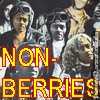
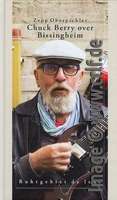
Bissingheim is a suburb of Duisburg which itself is a suburb of the largest megacity in Germany, the Ruhrgebiet. Duisburg is best known for having the world largest in-land port.
"Chuck Berry over Bissingheim", subtitled "The true story of rock and roll", is a 2017 book by Frank "Zepp" Oberpichler. Oberpichler is a German musician and writer. He played guitar in various cover bands such as "Ten Beers After", "Substitute" or "Freeway Cash" and published some CDs alone and with US or German musicians. His homepage is at http://www.oberpichler.de.
In "Chuck Berry over Bissingheim", the first-person protagonist tells about his Grandpa ("Oppa") Wallusch, an electrical engineer working at the railroads. Oppa Wallusch just passed and his grandson remembers the stories they shared. So we learned that while Bissingheim was never on the tour plan of any famous rock band (or any unknown highschool band either), Bissingheim was indeed the birthplace of Rock'n'Roll.
Oppa Wallusch learned to play guitar in the early 1940s while staying in England during the war. He got friends with an American Blues musician by the name of Big Joe Turner. Back home Wallusch formed a band which on weekends played at weddings and barn dances near Bissingheim. Here Oppa Wallusch merged Blues with Polka dance music and created what he called "Ruck und Roll".
Over the years, his employer sent Wallusch to England and to the States several times and wherever he went, Oppa Wallusch left his traces by educating young musicians or helping them write famous songs. Together with Jim Marshall he invented the guitar amplifier and taught Jimi Hendrix and Pete Townshend how to use it. Wallusch met Woody Guthrie and Jerry Garcia, was on stage at Woodstock and shaped rock music as we know it.
A whole chapter covers Wallusch's stay in Chicago in the late 1940s where he met and educated Chuck Berry on how to do the "Ruck und Roll", how to play guitar and how to write story songs.
The book is a report of Wallusch's talks with his grandson. But concurrently the book is its own soundtrack album. The chapter headings read Track 1 to Track 11 (along with run-in and run-out). Each chapter starts with a quote from a famous railway song (which Wallusch might have been involved in). And each chapter includes the lyrics of a German-language song Wallusch wrote and which is very close to a hit you might remember. Unfortunately no recordings of Wallusch's originals survived.
Track 11 is a song about a guy trying to get a number from the operator to get his loved-one on the phone. The lyrics end explaining that the guy is trying to phone his daughter, not his girl-friend. Wallusch's song is called "Meiderich - Kennen Sie?". (Meiderich is another suburb of Duisburg, "Kennen Sie" is German for "Do you know".) And, believe it or not, Chuck Berry took Wallusch's idea and melody to create a famous English-language version.
Oberpichler's book is a nice read. It could have used less slang, though. I guess even many Germans will not fully understand Wallusch's recollections. But mainly I wish the book would have been longer: Just eleven tracks are much too short for a soundtrack album nowadays.
It's a pity nobody else remembers Oppa Wallusch, this hero of Rock'n'Roll. Even in Bissingheim he is long forgotten, as Oberpichler shows in this nice video trying to find the roots of rock music in Duisburg: https://youtu.be/45WnyUKgkzY
If you can read German, get yourself a copy at your local bookstore using the ISBN 9783942094726. The book is also available at amazon.com or amazon.de. Recommended.
Wednesday, December 13. 2017
CBID - Renewed CDs, old Vinyl, and a postcard

CBID is never complete as new records and CDs appear and some old rarities are discovered. This section presents interesting additions and corrections to CBID.
Today: Universal Japan re-issued their Mini-LPs, some singles were found or newly released, there's a postcard from Poland, and some bootlegs of unknown origin.
JAPAN
In June 2017 following the death of Chuck Berry, Universal Japan re-issued their 2010 package of 16 original US Chess albums with bonus tracks (page 2007). All had new catalog numbers as follows:
AFTER SCHOOL SESSION - Universal (Chess) UICY-78357 • June 2017
ONE DOZEN BERRYS - Universal (Chess) UICY-78358 • June 2017
BERRY IS ON TOP - Universal (Chess) UICY-78359 • June 2017
ROCKINâ AT THE HOPS - Universal (Chess) UICY-78360 • June 2017
NEW JUKE BOK HITS - Universal (Chess) UICY-78361 • June 2017
TWIST - Universal (Chess) UICY-78362 • June 2017
CHUCK BERRY ON STAGE - Universal (Chess) UICY-78363 • June 2017
ST. LOUIS TO LIVERPOOL - Universal (Chess) UICY-78364 • June 2017
CHUCK BERRY IN LONDON - Universal (Chess) UICY-78365 • June 2017
FRESH BERRYâS - Universal (Chess) UICY-78366 • June 2017
BACK HOME - Universal (Chess) UICY-78367 • June 2017
SAN FRANCISCO DUES - Universal (Chess) UICY-78368 • June 2017
LONDON SESSIONS - Universal (Chess) UICY-78369 • June 2017
BIO - Universal (Chess) UICY-78370 • June 2017
CHUCK BERRY - Universal (Chess) UICY-78371 • June 2017
HAIL! HAIL! ROCKâNâROLL - Universal (Chess) UICY-78372 • June 2017
And in July 2017 Universal Japan finally released the 5 Mercury CD albums with the extra tracks that came out in the US in 1989 (pages 102-104). As with the 16 Chess albums each CD is packaged in a replica mini LP sleeve.
GOLDEN HITS - Universal UICY-78376 • July 2017
CHUCK BERRY IN MEMPHIS - Universal UICY-78377 • July 2017
LIVE AT THE FILLMORE AUDITORIUM - Universal UICY-78378 • July 2017
FROM ST. LOUIE TO FRISCO - Universal UICY-78379 • July 2017
CONCERTO IN B GOODE - Universal UICY-78380 • July 2017
CANADA
Rock And Roll Music / Blue Feeling (instr)
Chess Golden Treasures CHGT-317X • 1986
The label says âDeep Feelingâ but plays âBlue Feelingâ.
Nadine / OâRangutang (instr)
Chess Golden Treasures [Quality] CHGT-323X • 1986
âNadineâ is in stereo, and âOâRangutangâ is the complete three-minute version. This is astonishing as according to common belief the unabridged version was first released on a British CD in 1998. Further research then revealed that there was an even earlier release in the late 1960s. See the US single below.
Reelinâ And Rockinâ (1957) / My Ding-A-Ling (single edit)
Quality Gold Collection GC-337X • 1986
See pages 273 and 1993 for the other singles in this series regarding especially the year of all three releases, as the labels on the above singles say 1981.
US
Nadine / OâRangutang (instr)
Chess 1883 (re-issue) • ca. 1967
The original 1964 release exists with three different labels. Page 29 shows these labeled first to third pressing, though it seems that these labels were used concurrently in different pressing plants. All had âNadineâ in mono and âOâRangutangâ faded at 2:18. On this light-blue label re-release âNadineâ is in stereo, and âOâRangutangâ is the complete three-minute take heard here for the first time!
NEW ZEALAND
SAN FRANCISCO DUES
Chess (Polygram) CH-50008 • 1972
Same cover as US album from 1971.
UK
School Day / Sweet Little Sixteen
Demon CLASSIC 45001/3 • 2016
This is record no.3 in a series of 10 7â singles released as a box-set by Demon Records in the UK, titled âRock ânâ Roll Classic 45sâ Classic-45001. The two songs are the original classic Chess cuts. The other greats are Bill haley & His Comets, Buddy Holly, Eddie Cochran, Jerry Lee Lewis, Little Richard, The Everly Brothers, Carl Perkins, Fats Domino and Gene Vincent. Talking about the Golden Era of rockânâroll from the â50s, two are missing, Elvis and Bo Diddley. They should have made 12.
POLAND
Guitar Boogie (instr)
PoozĂłwka Zwiekowa 45 rpm. • year unknown
Polish sound postcard, 15x11 cm, colour picture of flowers in a vase and the grooves pressed onto it. The card says it plays âThings I Used To Doâ but it doesnât.
BOOTLEGS - EUROPE (?)
These are two bootlegs which combine sides from past records including their original labels each.Havana Moon / El Loco Cha Cha (Rene Touzet)
no label or number • 2017
This is a reissue combining Havana Moon (1956) by Berry on one side and El Loco Cha Cha (1955) by Rene Touzet on the other. It is advertised as being the roots of âLouie Louieâ. The song by Rene Touzet has actually nothing to do with Havana Moon but the opening of El Loco Cha-Cha has something to do with Louie Louie. It has the same riff, so to speak.
You Can't Catch Me / The Downbound Train
no label or number • 2012
This is a repro (bootleg) since the two songs were not on the same single back then in '56. Anyway, there's no matrix numbers either, just the title on each side written by hand in the dead wax. I bought it from a seller in the UK so it was released in Europe, probably pressed in Kroatia or something like the Berry/Touzet one.
Main Page
This weblog is an addition to my Chuck Berry fansite called "A Collector's Guide to the Music of Chuck Berry" which describes all books and records of interest to everyone enjoying Chuck Berry's music.
Categories
What You Missed
Some earlier but important entries:
- Unanswered questions about the recording of Memphis, Tennessee
- Sweet Little Eight Variants of Sweet Little Sixteen
- The Johnny B. Goode Session
- Chuck Berry in Stereo
- Chuck Berry's Recording Session for Volkswagen
- Chuck Berry's Recording Session for Dr Pepper
- Tim McFarlin Introduces the Berry-Johnson Test into American Copyright Law
- Chuck Berry's Early Recording Locations
- Run! Rudolph, the Red-Nosed Reindeer â and the copyright mystery
- Chuck Berry live in New York 1956
- The very first Chuck Berry LP album
- The Chuck Berry On Stage (Chess LP-1480) confusion continues
- The Chuck Berry Vinyl Bootlegs, Vol. 1: Rare Berries
- Rocksmuk album - bootleg or not?
- 6034 cover versions of Chuck Berry songs
- Chuck Berry's Greatest Hits (Chess LP-1485) variants
Recent Entries
- CHUCK100 Tribute EP Series
- Thursday, January 16 2025
- CBID - Corrections, Additions, New Covers
- Friday, January 10 2025
- Rhythm and Rhyme - Chuck Berryâs poetic heartbeat
- Sunday, December 22 2024
- CBID - 6034 and counting ...
- Friday, November 1 2024
- CBID - 6034 cover versions of Chuck Berry songs
- Friday, July 5 2024
- CBID - The Never Ending Story - pt. 9
- Monday, June 10 2024
- CBID - The Never Ending Story - pt. 8
- Tuesday, June 4 2024
- CBID - The Never Ending Story - pt. 7
- Monday, April 22 2024
- Peter OâNeilâs So-Called Disorder
- Friday, April 12 2024
- The Chuck Berry Sound according to Atomicat
- Wednesday, April 10 2024
- CBID - The Never Ending Story - pt. 6
- Wednesday, April 3 2024
- CBID - The Never Ending Story - pt. 5
- Saturday, March 16 2024
- CBID - The Never Ending Story - pt. 4
- Monday, February 19 2024
- CBID - The Never Ending Story - pt. 3
- Monday, February 5 2024
- CBID - The Never Ending Story - pt. 2
- Monday, January 22 2024
- The Chuck Berry Vinyl Bootlegs, Vol. 3: America's Hottest Wax
- Tuesday, January 16 2024
- Chuck Berry in Fake Stereo
- Friday, January 12 2024
- CBID - The Never Ending Story
- Thursday, January 11 2024
- CBID - 5639 cover versions of Chuck Berry songs
- Tuesday, October 31 2023
- CBID - Covers, Chart Listings, and Not-Covers
- Monday, August 28 2023
- CBID - And they play Chuck Berry music - final part 10
- Monday, March 27 2023
- Little Queenie overdubs
- Monday, March 13 2023
- CBID - And they play Chuck Berry music - part 9
- Saturday, March 4 2023
- Lonely School Days - the variants explained
- Tuesday, January 31 2023
- An Interview with Johnnie Johnson - 1987
- Sunday, January 29 2023
Search
Copyright and Disclaimer
© Dietmar Rudolph
No part of this document may be used or published without written consent by the author.
Impressum/Haftungsausschluss/Datenschutz/Disclaimer
To contact the authors, email to cbguide@crlf.de.
